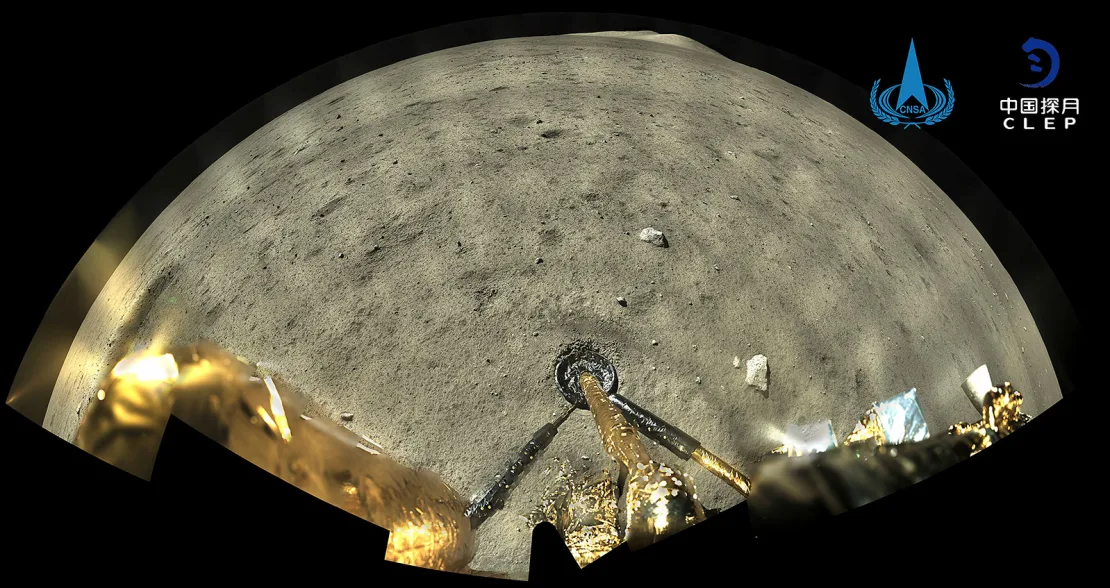
Groundbreaking Discovery of Water Molecules in Moon Samples by Chinese Scientists

In an exciting development, Chinese scientists have found water molecules in lunar soil samples brought back by their Chang’e-5 probe. This discovery marks the first time molecular water (H2O) has been identified in physical samples from a part of the moon previously thought to be devoid of such water.
Discovery Details
The Chang’e-5 probe, which landed on the lunar surface in 2020, collected soil samples containing a transparent crystal, named ULM-1, which consists of about 41% water. This unknown lunar mineral, with the chemical formula (NH4)MgCl3·6H2O, was found to have water molecules stabilized by ammonia, enabling their existence despite the moon’s extreme temperature variations.
Implications for Lunar Exploration
This type of molecular water could be a valuable resource for future lunar habitation. The presence of stabilized water molecules opens new possibilities for extracting water directly from lunar soils, potentially supporting human activities on the moon, such as growing plants or converting water into rocket fuel.
China’s Space Ambitions
China’s discovery is part of its broader agenda to become a leading space power. With significant milestones already achieved, such as the first robotic lunar landing in four decades and landing on the moon’s far side, China plans to land astronauts on the moon by 2030 and establish a research base at its south pole.
Context and Future Research
Previous lunar water discoveries were mainly located at the moon’s cold, dark poles, where conditions are more conducive to ice or hydroxyl compounds. However, the Chang’e-5 samples were collected from a middle-latitude region, challenging previous assumptions about the stability of water in such areas.
Experts caution that more research is needed to understand the abundance and practical applications of this water. Nonetheless, this discovery represents a significant step forward in lunar science and exploration.

Global Collaboration
While China has made its Chang’e-5 samples available to the international scientific community, geopolitical tensions and legislative barriers, such as the Wolf Amendment, have limited collaboration with NASA. Despite these challenges, there is a growing recognition of the importance of international cooperation in space exploration for the benefit of all mankind.
Conclusion
China’s identification of molecular water in lunar samples not only advances our understanding of the moon’s composition but also highlights the country’s growing prowess in space exploration. As China continues to make strides in this field, the potential for groundbreaking discoveries and advancements in lunar science remains vast, underscoring the importance of sustained research and collaboration.



